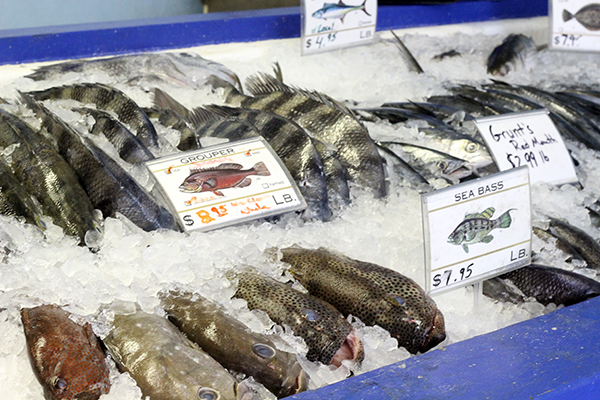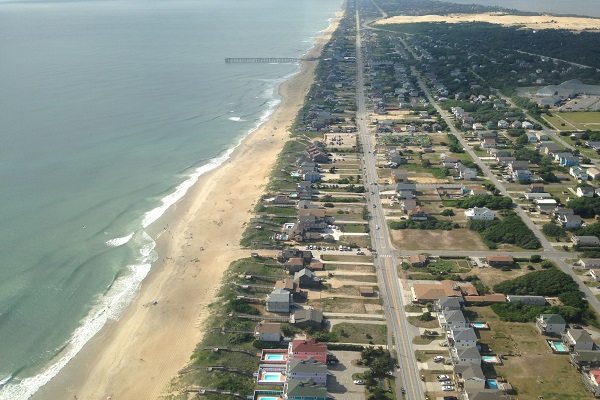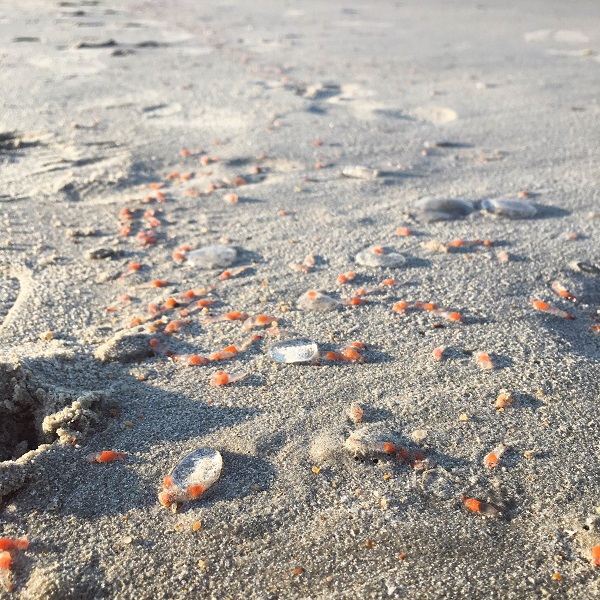CURRENTS: A Cohesive Strategy: The North Carolina Watershed Stewardship Network

A 3.3-square-mile area may seem like an inconsequential speck on the map compared with North Carolina’s 53,819 total square miles. But for the people, plants and animals that live there, it’s more than just a tract of land — it’s home.
This particular patch of earth, also known as the Black Creek watershed, once was home for Christy Perrin, the sustainable water and communities coordinator for North Carolina Sea Grant and the Water Resources Research Institute of the University of North Carolina system. Like Perrin, we all live in a watershed: an area of land that drains all rainwater or snow to one location, such as a river or lake.
Our local watersheds sustain us. “Water is the basis of everything: our health, fun activities, economy, farmers and industries,” she explains. Unfortunately, humans also interfere with the health and sustainability of our watersheds by adding pollution, including runoff and erosion, to the mix.
Many people and organizations have dedicated themselves to protecting the more than 1,700 watersheds that make up North Carolina. Their efforts could make a difference locally but, as Perrin observes, “it has to be a group effort.”
Several watershed professionals came together in 2011 to discuss how they could better support these local stewards. “That led to us cobbling together our resources to do a needs assessment, and from there, assembling a group of people to tell us what we should do with the results,” Perrin recalls.
The result was the North Carolina Watershed Stewardship Network, which Perrin co-coordinates with Grant Parkins of the University of North Carolina at Chapel Hill’s Institute for the Environment.
The network seeks to empower watershed stewards to more effectively protect and restore local waters, which are crucial to our environment, our economies and our communities — the triple-bottom-line approach to water, as Perrin describes it.
“We started as a network for sharing local water success stories,” Perrin notes. “Then, seeing the needs of the groups we were trying to serve, we created trainings and workshops.”
Most recently, the network, which is led by a steering committee with representatives from more than 20 organizations, has conducted watershed planning workshops with partner groups. “We tried to fill a gap in social resources by helping people network and learn about the tools that already exist,” Perrin adds.
“The broad idea is to foster leadership that will result in greater protection of North Carolina’s watersheds,” explains Parkins. “We’ve gotten overwhelmingly positive feedback from the participants and hope to continue growing the program.”
Workshop participants were introduced to the watershed game, an interactive tool developed by Minnesota Sea Grant and adapted for North Carolina by Gloria Putnam, North Carolina Sea Grant’s coastal resources and communities specialist.
“The game provides an easy and fun way to educate others about the connections between water quality and various land uses,” explains Putnam, who also serves as a member of the network’s steering committee. “It also demonstrates how private landowners and local governments can work together and implement measures that make a difference.”
The network has started exploring the idea of a statewide summit to continue sharing lessons and to strengthen connections among stewards. It especially is interested in working with coastal plain communities, the region with the lowest response rate to the network’s original needs-assessment survey.
“We want to keep broadening and building our network. The more people who join, the more power we will have to help support and start these local watershed efforts,” Perrin says. She hopes to use her Sea Grant connections to identify new coastal groups and individuals to bring into future collaborations.
“Having ties to the Watershed Stewardship Network creates more opportunities for Sea Grant and WRRI to get feedback from communities on the research, education and training support needed to effectively address their water-resource challenges,” notes Susan White, executive director of both programs. “Network members will benefit from this input as Sea Grant and WRRI seek out partners and provide funding to directly address these identified research and educational needs.”
Watershed groups can join the network by adding themselves to the interactive map at ncwatershednetwork.org. The map allows people to find their watershed and connect with information, such as water-quality conditions and active organizations, specific to where they live, work or play.
The network also offers opportunities like an e-newsletter for individuals to get involved. And anyone can help improve community health and economic development by making decisions that protect their local watershed — their home.
“It has to happen locally. State agencies can’t come in and do all the work. They just don’t have the resources, and people probably wouldn’t like that anyway,” Perrin concludes. “People want to have control of their own local destinies.”
This article was published in the Autumn 2016 issue of Coastwatch.
For contact information and reprint requests, visit ncseagrant.ncsu.edu/coastwatch/contact/.
- Categories:


